introduction and general information
Like an unpolished diamond, the sparkle of Namibia is not instantly visible, yet scratch the surface and you will find a most intriguing destination. From some of the highest and most beautiful sand dunes in the world to rich German heritage, mysterious desert-adapted wildlife and a coastline covered in thick swathes of fog, the magic of Namibia lies in its nature. The country's immense landscape covers 825 418 km2, with desert dunes and wildlife areas such as the Namib-Naukluft, the fourth largest conservation area in the world, and the wildlife-dense Etosha National Park. At Namib-Naukluft, visitors will find the world-famous Sossusvlei, with some of the most spectacular orange-hued dunes in the world, while Etosha's most distinctive feature is the Etosha Pan, once a lake and now a massive white, salty depression that fills with pockets of pools after infrequent rains, attracting up to one million flamingos which use the pan as a breeding ground. The rain pools, along with approximately 30 waterholes and springs across the reserve, sustain an abundance of wildlife. The south of the country is dominated by the Kalahari Desert, strange forests of quiver trees and the gapingly beautiful Fish River Canyon that stands in complete contrast to the rugged northern coastline, home to the ethereal and unyielding Skeleton Coast. The lush Caprivi Strip provides more wildlife and cultural interaction, while regions such as Kaokoland and Damaraland lie locked in ancient tribal traditions holding a wealth of rich cultural history, and where desert-adapted elephants roam the dry riverbeds in search of spring-fed waterholes. In the centre of the country, the cosmopolitan capital of Windhoek offers numerous city tours and experiencesr, while the coastal city of Swakopmund is the outdoor adventure capital of Namibia offering sandboarding, quad biking, camel rides, scenic flights and much more. Many underestimate the enormous size of this magnificent yet sparsely populated country and therefore guided tours are recommended, as travelling distances between locations can take up to a day and lead you through remote and desolate areas. If you wish to self-drive, then a 4x4 vehicle is ideal and travelling with a group is highly recommended. Exploring the country will take some time and therefore a stay of at least two weeks is advisable.
our top 5
Namib Desert and Dunes
The Namib Desert commands a large portion of Namibia's landscape, featuring ethereal scenery and fascinating wildlife. It is the oldest desert in the world with an immense expanse of relentlessly moving gravel plains and enormous dunes that stretch along the entire coastline. Within its centre lies a portion of the Namib Naukluft Park, showcasing famous landmarks such as Sossusvlei, Dune 45, Sesriem, Sandwich Harbour, and of course desert-adapted wildlife. Self-guided itineraries are possible as most of the roads are in good condition; however certain areas such as the Tsaris, Remhoogte and Spreetshoogte Passes do require prior preparation and a 4x4 vehicle. Travellers should also bear in mind the immense size of the Namib and allow enough time for travel. Quirky Solitaire is the only refuelling pit-stop from the coast to the desert, while the small settlement of Sesriem, located at the entrance of the Namib Naukluft National Park, offers a filling station and a few general amenities. In addition to driving safaris, there are also number of sight-seeing options available such as hot-air balloon rides, scenic flights, dunes walks, and quad biking adventures. Boutique Africa can assist you with choosing from a selection of tours and activities that range from full day to a few hours and include visits to old castles, nature drives, champagne breakfasts in the desert, and 4x4 adventures through some of the tallest dunes in the world, among many others. Suggested length of stay: The immensity of the Namib Desert requires at least 2-3 nights of exploration and while a guided itinerary is best, this country also lends itself to self-driving options combined with a selection of guided tours and visits.
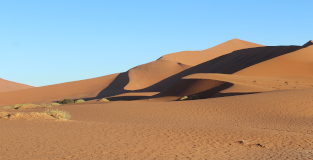
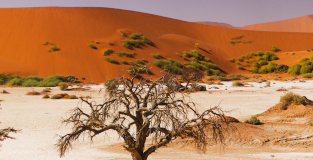 Add to Favourites
Add to Favourites
Damaraland and Bushmen paintings
Damaraland is a spectacular semi-desert wilderness, home to Namibia's famous desert-adapted elephants and black rhino. In the south eerie granite rock formations spring up from gravel plains and shelter a wealth of San rock art while to the north the vegetation becomes more lush and mountainous. Must-see highlights in the south include Spitzkoppe and Brandberg, Namibia's highest mountain that dominates the surrounding desert plains. This area is also home to the world's richest galleries of San rock art that are now a protected World Heritage Site. The most well-known rock art painting is the White Lady, while the Tsisab Ravine on the north eastern side of the massif also holds a wealth of ancient rock art. Other highlights include Twyfelfontein, a petrified forest, and Vingerklip, a striking vertical pinnacle of rock balancing precariously on the ground. Many private safari reserves are located in the north of Damaraland, protecting the rare desert-adapted wildlife that thrives there. To the east the vegetation becomes more lush and game numbers increase, while black rhino are present throughout the region. Sesfontein on the northern edge of Damaraland is named after the ‘six springs' that surface nearby and is a stop noted for its great photographic opportunities. Suggested length of stay: Both northern and southern Damaraland have large concession areas that are set aside for tourism and offer a wide selection of accommodation options. We suggest spending 2-3 nights in both. Boutique Africa can assist you in selecting the ideal accommodation to suit your needs, activities such as elephant tracking, game drives and guided nature walks, or help you with arranging a guided tour.
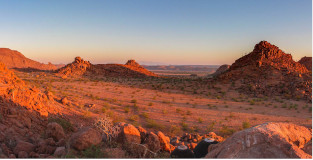
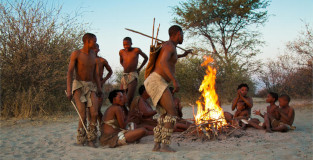 Add to Favourites
Add to Favourites
Etosha
Lying in the northern reaches of Namibia, Etosha is one of the best and most accessible wildlife parks in southern Africa. It is famed for its enormous salt pan that was once a lake but is now a massive white, salty depression that fills with pools after infrequent rains, attracting up to one million flamingos. These rain pools, along with approximately 30 waterholes and springs across the reserve, sustain an abundance of wildlife that can be easily located and observed, making wildlife viewing highly rewarding. The reserve is malaria-free and can be accessed in a regular sedan car allowing for self-drive safaris, or guided 4x4 game drives can be booked. The rest camps offer accommodation, restaurants, viewing decks, shops and petrol stations. The three main camps of Okaukuejo, Halali and Namutoni are more affordable and provide camping sites and chalets overlooking floodlit waterholes. Deeper in the park lie the exclusive and upmarket camps of Dolomite and Onkoshi, while the selection of lodges on the outskirts of the park are close enough for day trips. For self-drivers, maps of the park are easy to come by; however, for a more fulfilling experience we recommend at least one full-day guided safari. These take place in an open-air 4x4 vehicle accompanied by a guide with a wealth of knowledge regarding the wildlife in the park and where to find them. Half day, morning and afternoon game drives are also available.
Suggested length of stay: The immense size of Etosha makes it impossible to cover in a day or two, so we suggest a minimum stay of 3-4 nights. With our specialist knowledge we can assist you with all the necessary information about Etosha as well as book your accommodation and guided safaris in advance.
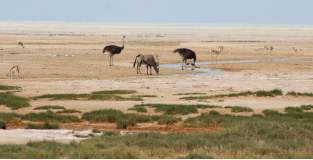
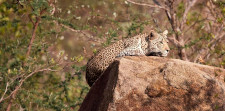 Add to Favourites
Add to Favourites
Caprivi Strip
Namibia's Caprivi Strip is a 450-km-long panhandle combining rich culture with scenic swamps, rivers, woodland and forests. It is traversed by four perennial rivers supporting over 600 bird species, four of the Big Five, and a wide assortment of flora. Its human inhabitants are diverse and despite its small size the Caprivi Strip is home to six different ethnic tribes. The area is also renowned for its accomplished wood carvings. Rundu, at the gateway of the Caprivi, features an excellent woodcarving market as well as a number of amenities such as banks, shops and service stations, making it a good place to stock up on necessities. In contrast, Katima Mulilo is Namibia's most remote outpost, but nevertheless worth a visit for the Caprivi Art Centre, a large open-air community market. The region presents the opportunity to observe ancient traditions and taking a day to explore a cultural village is highly recommended. A large portion of the Caprivi is only accessible in an off-road vehicle and for this reason we recommend booking a guided wildlife safari, with the option of a river cruise on the Zambezi. This is arguably the easiest and most pleasant way to enjoy the resident wildlife as many of the species are water based. Suggested length of stay: From the Caprivi Strip, Botswana is easily accessible and many travellers choose an itinerary that includes both these regions and ranges in duration from 3-4 days to two weeks. Boutique Africa can assist you with bookings and suggestions in order to make the most of your time here. As with the rest of Namibia, travelling from one location to the next takes some time and travellers should bear this in mind when planning their holiday.
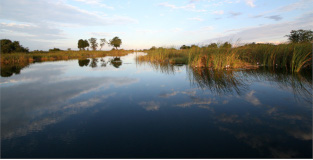
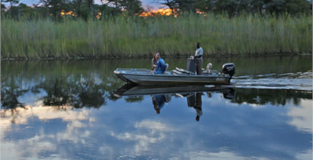 Add to Favourites
Add to Favourites
Kaokoland
Kaokoland is a remote region in northern Namibia, considered one of the last true wilderness areas in Africa. Besides its isolation, its main drawcard is the Himba, one of the last remaining nomadic groups in Africa who remain unaffected by changes to the modern world. They survive despite the harsh landscape and are distinguished by their intricate braiding and burnished orange hue as a result of applying butterfat and ochre pigment to their hair and skin to protect themselves against the sun and mosquitoes. Interacting with this remote tribe is a unique experience and we highly recommend a visit to a traditional homestead located close to Opuwo that includes a guide who is fluent in OtjiHimba, the local language. Outside of the capital of Opuwo there are no amenities, only a network of dirt roads leading into a vast 50 000 square kilometre wilderness. Another recommended highlight is Epupa Falls, located in the Kunene region and stemming from the river of the same name. The series of waterfalls is spread over 1,5 kilometres and well worth a day's exploration due to their pristine environment, coloured rock walls and stunning makalani palms and baobab trees that line the banks. Other activities and interesting sights here include guided or unguided walks, natural rose quartz crystals, and the poisonous Euphorbia bush whose milky white sap is traditionally used by the Himba for hunting purposes. Suggested length of stay: The harsh and remote landscape of Kaokoland is best explored with a tour guide over a period of 3-4 days as it requires excellent off-road driving skills and there is a good possibility of encountering free-roaming desert elephants. Please contact us about planning a bespoke guided itinerary.
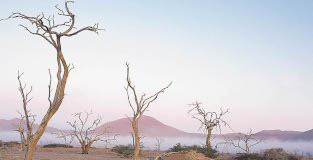
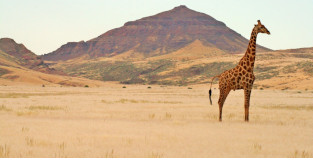 Add to Favourites
Add to Favourites
